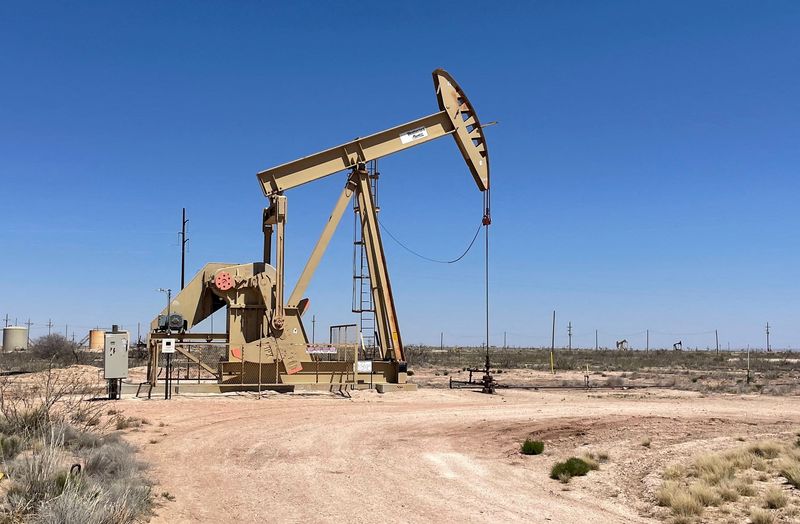Commodities
Morning bid: Fed fears overwhelm AI theme, gold recoils

A look at the day ahead in U.S. and global markets from Mike Dolan
And then there was one.
In an extraordinary turnabout in just five months, financial markets now fully price just one quarter-point interest rate cut from the Federal Reserve this year – compared to the six built into futures prices at the start of 2024.
The good news is that’s largely down to the sheer strength of the ongoing U.S. expansion – the bad news is that very strength makes it harder for the Fed to see inflation hitting its target and keeps it hesitating on a first rate cut.
Thursday’s reversal of fortunes on Wall St reflected all that clearly, with surprisingly strong business and labor market updates seeding the worst day of the month for despite Nvidia (NASDAQ:)’s near 10% surge on another blowout earnings report infused by the artificial intelligence boom.
Even though the broader tech sector ended the day higher, the 10 other major stock sectors were left in the red. And the equal-weighted S&P500 lost 1.4%.
Fed fears 1 – AI 0.
With just 35 basis points of Fed easing now priced for the year, two-year Treasury yields climbed back to within 4bps of the 5% threshold. The dollar jumped back to its best level since mid May and that in turn triggered a reversal in lofty gold prices – clocking their worst day in month and worst week of the year.
The bounced back more than a point from pre-pandemic lows.
A so-called “bear-flattening” of the yield curve saw the inversion of the 2-10 year yield gap deepen to its most negative this year – with yields at both tenures rising but short rates up by more.
The yield curve has been inverted for almost two years solid now and its reliability as a harbinger of recession has been shot to bits – underscoring the peculiarity of this particular cycle and how the Fed may be struggling to cool it down.
Ahead of the U.S. Memorial Day holiday on Monday, all the major price indicators have given back a bit of Thursday’s moves – with up 0.2% ahead of the bell and both Treasury yields and the dollar off a touch.
But the Fed rate jitters rippled across the world overnight, with bourses in Tokyo, Seoul, Hong Kong and Shanghai losing more than 1% on Friday.
China’s ongoing military exercises around Taiwan have not helped investor confidence.
Europe’s two-day loss continued – with regional interest rate and political concerns of its own.
Even though the European Central Bank is still nailed on to deliver its first rate cut next month, unexpected strength in May business readings and a surprising acceleration of negotiated wage settlements in the first quarter have dragged market pricing for full-year ECB easing back below 60bp.
The rethink of the Bank of England’s trajectory this week has been even more dramatic as sticky UK inflation readings combined with news of a snap election for July 4.
Although Friday’s data showed UK retail sales plunging far more than forecast last month, money markets have wiped out chances of a BoE cut next month and now only see a 1-in-3 chance of a move in August.
Sterling, whose broader trade-weighted index is back up at 8-year highs to pre-Brexit referendum levels, recaptured some of Thursday’s losses against the dollar.
Elsewhere, traders monitored the G7 finance meeting in Italy and a Friday speech from Fed governor Chris Waller in Iceland.
In company news, a 7.55% tumble in Boeing (NYSE:) on Thursday after the U.S. planemaker forecast negative free cash flow in 2024 accounted for over 90 points to the downside for the blue-chip .
Ticketmaster-owner Live Nation slumped almost 8% after the U.S. Justice Department along with a group of 30 states and the District of Columbia Thursday sued to break up the concert promoter.
In Europe on Friday, shares of Renault (EPA:) rose 4% after the French carmaker announced a share buyback plan. And Britain’s National Grid (LON:) regained nearly all of Thursday’s 10% plunge on plans to raise about 7 billion pounds ($8.9 billion) in a rights issue.
Abrdn shares slipped after the UK fund manager’s CEO Stephen Bird stepped down.
Key diary items that may provide direction to U.S. markets later on Friday:
* U.S. April durable goods orders, University of Michigan’s final May household survey reading
* G7 finance ministers and central bank Governors meet in Stresa, Italy

* Federal Reserve Board Governor Christopher Waller speaks
* U.S. corporate earnings: Workday (NASDAQ:)
(By Mike Dolan, editing by Nick Macfie mike.dolan@thomsonreuters.com)
Commodities
Oil prices rise; U.S. crude inventories plunge, Russia-Ukraine truce eyed
Commodities
India’s Reliance to stop buying Venezuelan oil over US tariffs, sources say
Commodities
Oil prices climb on Venezuela supply worries

 Forex3 years ago
Forex3 years agoForex Today: the dollar is gaining strength amid gloomy sentiment at the start of the Fed’s week

 Forex3 years ago
Forex3 years agoUnbiased review of Pocket Option broker

 Forex3 years ago
Forex3 years agoDollar to pound sterling exchange rate today: Pound plummeted to its lowest since 1985

 Forex3 years ago
Forex3 years agoHow is the Australian dollar doing today?

 Cryptocurrency3 years ago
Cryptocurrency3 years agoWhat happened in the crypto market – current events today

 World3 years ago
World3 years agoWhy are modern video games an art form?

 Commodities3 years ago
Commodities3 years agoCopper continues to fall in price on expectations of lower demand in China

 Economy3 years ago
Economy3 years agoCrude oil tankers double in price due to EU anti-Russian sanctions

























